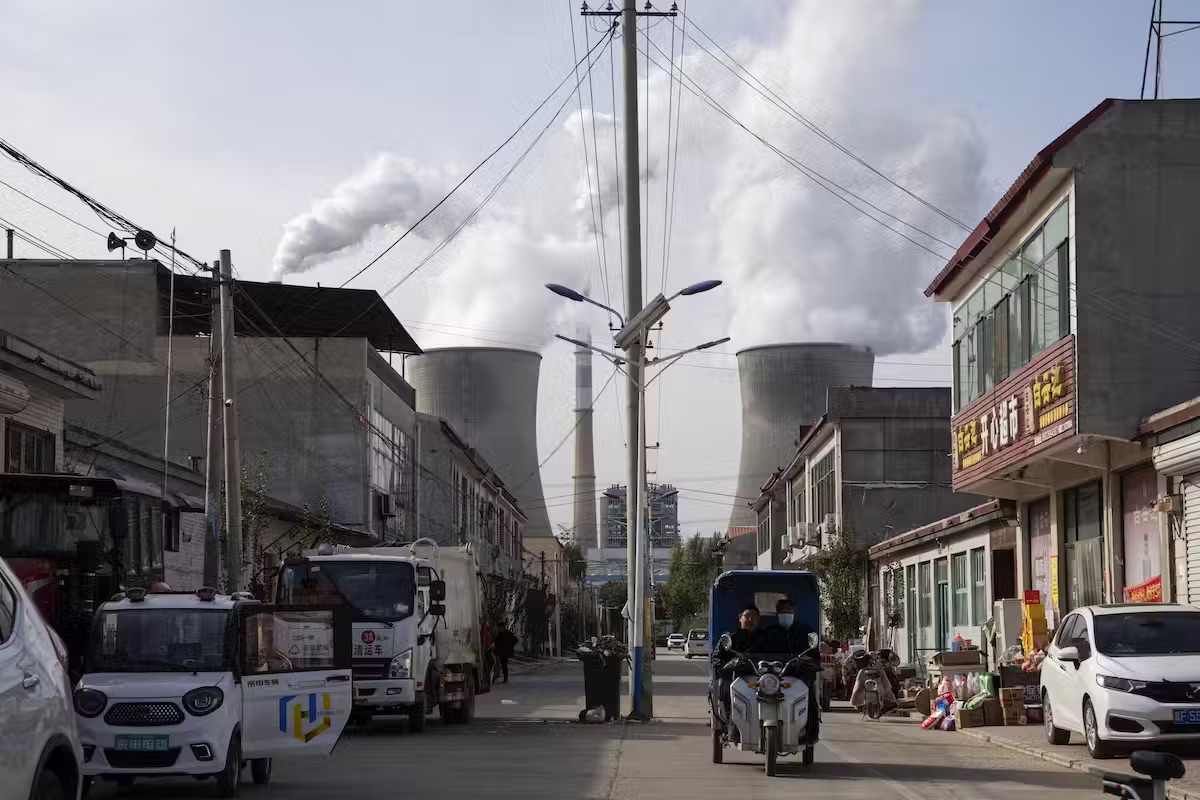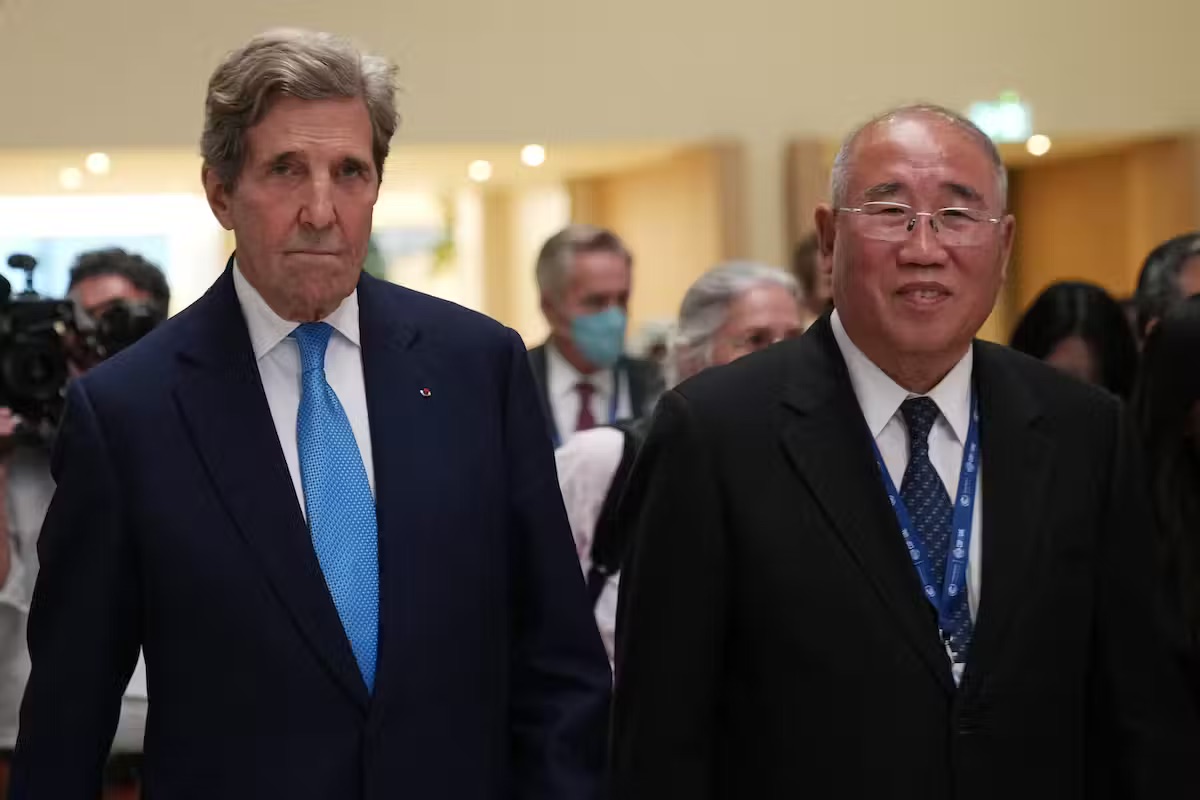![]()
Written by
U.S. President Joe Biden and China’s President Xi Jinping walk in the gardens at the Filoli Estate in Woodside, Calif. on the sidelines of the Asia-Pacific Economic Cooperation conference.
In a politically turbulent world, it is rare to witness major global actors set aside their disagreements to address the existential threats posed by climate change. On Nov. 14, the United States and China did just this by issuing the Sunnylands Statement on Enhancing Cooperation to Address the Climate Crisis.
Issued prior to the pivotal Biden-Xi meeting on Nov. 15 at the Asia-Pacific Economic Cooperation (APEC) summit in San Francisco, the statement not only establishes a spirit of co-operation but also sustains the progress made in recent climate dialogues between the world’s two largest greenhouse gases (GHG) emitters.
Climate organizations and analysts have welcomed the statement. China Dialoguestated that it shows that even with their complex relationship, both nations are committed to prioritizing climate issues. While the Asia Society Policy Institute characterized the bilateral alignment of the statement as an “insurance” to the ongoing 28th United Nations Climate Change Conference (COP28).
As a scholar closely monitoring the global implications of China’s climate policy, the statement is particularly intriguing for how it describes China’s approach to energy transition. China’s determination to “ramp up renewable energy with the goal of displacing fossil fuels” should be taken seriously by Canadian, and global, policymakers when planning energy futures.
Accelerating renewable energy transition
There are two significant developments within the statement which are worth highlighting. The first is China’s commitment to setting comprehensive climate targets by 2035 that encompass all greenhouse gases (GHG) and the second is its unprecedented consideration of absolute emission reductions in its (primarily coal-fuelled) power sector within this decade.
Such policy language is crucial for figuring out China’s future energy import prospects.

The Sunnylands Statement indicates that the U.S. and China recognize climate change mitigation as one of the limited domains in which they appear willing to cultivate stability in their bilateral relations. This isn’t entirely surprising, given the rapid transition towards renewable energy sources that both countries have undertaken. This trend gained momentum during the pandemic and is anticipated to continue as their economic activities recover, and become more dependent upon renewable energy.
This has been confirmed by BloombergNEF’s 2023 Sustainable Energy in America Factbook, which reported that in 2022, U.S. energy transition investments rose 11 per cent year-on-year to $141 billion — a clear indication that clean energy is now an integral part of the American economy.
Meanwhile, despite the present obstacles, estimations for China’s greenhouse gas emissions indicate a probability exceeding 80 per cent that the country will reach its carbon peak between 2021 and 2026.
The journey towards decarbonization is not without obstacles. As highlighted in a recent review paper published by Applied Energy, about half of the announced economic stimulus plans worldwide continue to be dominated by fossil fuel investments. In countries like Canada, the allocation of subsidies to the oil and gas industry has generated public controversy.
Beyond investments, fundamental changes in how people travel and work — borne of the pandemic — may lead to enduring long-term reductions in the use of fossil fuels for transportation. As evidenced by a recent study published by PNAS, the growth in remote and hybrid work alone could reduce individual carbon footprints by as much as 58 per cent.
All eyes on COP28
The Sunnylands Statement, signifying the world’s two largest economies’ pledge to “pursue efforts to triple renewable energy capacity globally by 2030,” can thus steer discussions at COP28 towards meaningful fossil fuel phase-out strategies. Yet, concerns emerge when we consider Canada’s lack of determination in phasing out its oil and gas industry.
Reports on Canada’s fossil fuel industry’s role at COP28 have stoked fears of “greenwashing” over carbon capture proposals in Alberta. These proposals are intended to tackle GHG emissions during oil sands production but do not address the emissions from the consumption of fossil fuels.

This brings us to a crucial question looming over COP28: what does “net zero” actually entail? In her book Ending Fossil Fuels, environmental scholar Holly Jean Buck warns against a potentially perilous narrative that envisions a “cleaner fossil world” in which carbon storage and other forms of carbon capture continue to obscure the dominance of fossil fuels, thereby failing to address systemic problems caused by contemporary society’s addiction to carbon-intensive modes of economic growth.
If the unprecedented numbers of lobbyists — and perhaps even the COP28 president — have their say in preventing firm policy language concerning the end of the expansion of fossil fuels then a cleaner fossil-fuel world is likely to become our future. A future we should all be wary of.
Charting a new course
Although the Sunnylands Statement is undoubtedly a step in the right direction, it must be accompanied by a focused dialogue on the true meaning of net zero. Will a country lean towards net zero achieved primarily by renewables, or one achieved by carbon capture and storage?
How major economies (the U.S., China, Canada, etc.) approach these issues carries significant national and international consequences. The Sunnylands Statement paved the way for energy talks at COP28, and the world is eagerly watching such talks’ outcomes.
As said by the UN Secretary-General António Guterres, “The world is watching, and the planet can’t wait.”


